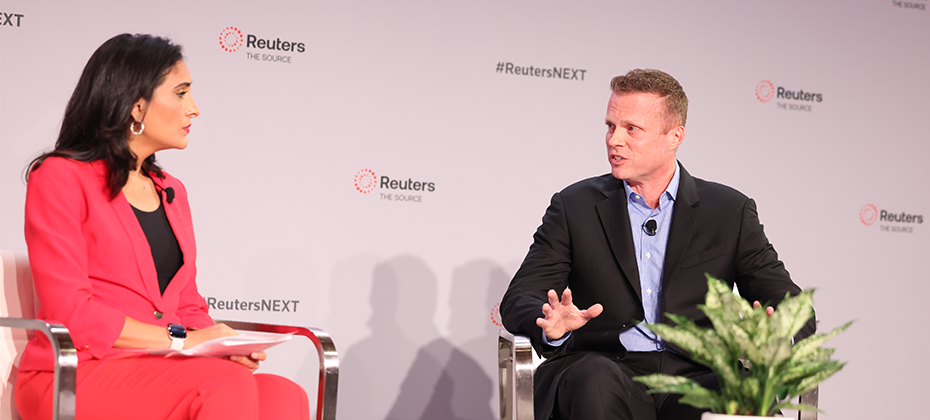Financial inclusion is a challenge, that, while not new, has become ever more apparent over the last year. The inequities and inequalities in our society, exasperated by the COVID-19 pandemic, which disproportionately affected underserved populations, have amplified the challenge lenders and others in the financial services industry face in fostering financial inclusion. As a result, there is an increased focus and importance on diversity, equity and inclusion (DEI) and having the ability to assess creditworthiness of overlooked and ‘invisible’ consumers.
In a recent webinar, we sat down with Sarah Davies, Head of Data Analytics at Nova Credit, and a panel of Experian experts including Wil Lewis, Chief Diversity, Equity and Inclusion Officer, Alpa Lally, Vice President of Product Management, and Greg Wright, Product Chief Officer, to explore the topic of DEI, what best practices exist to break down financial inclusion barriers and move financial access forward for all, and real-takeaway strategies and capabilities designed for fintechs and other financial institutions to leverage for lending deeper.
Below are a few key perspectives from our speakers:
- What barriers to access are there for credit across different groups of people?
[WL]: There are many barriers to financial inclusion, especially for underserved communities. The first of which is lack of awareness and lack of education about credit and how it impacts financial access – from obtaining loans, buying a first home, a new car and more. Not every American has someone in their life to teach and provide coaching on credit responsibility and how to be financially literate.
[AL]: Historically, credit, wealth and health inequalities have all contributed to financial disparities, and as a result, have created an underrepresentation of marginalized communities in the current credit ecosystem. That’s compounded by today’s ecosystem where consumer underwriting favors those with established thick-file credit histories with minimal delinquencies, particularly in the last 24 months. So, all things being equal, additional points distributed to elevate scores are given to consumers that are maintaining low revolving debt. This poses credit barriers for those starting out new to credit, or even to immigrants coming into a new country who don’t have an established credit history.
- What role could the credit industry play in healing the financial disparities created by the COVID-19 pandemic?
[WL]: Our opportunity lies in meeting consumers where they are today. COVID-19 has spotlighted economic and social disparities in a way it hasn’t been done before. At the same time, it illustrated how the inability of some groups to access financial services requires meaningful solutions, quickly. Historically, organizations have been known to look at this in a traditional way: meaning “we are the organization, consumers come to us and we can tell you what you can and can’t do.” We need to shift our focus to how we can provide consumers with tools, technology and machine learning (ML) that are available to empower them.
[SD]: One of the lessons we’ve learned from COVID, is that we need to be able to get to the marketplace fast in order to respond to the economic conditions. Fintechs have been very effective at this and it has shown through the approach they’ve taken towards immediacy in identifying, developing and distributing solutions. With consumers in a stressed position, it’s incumbent upon us, as the industry, to deliver consumer-centric options and opportunities in an efficient manner rather than having our consumers sit around waiting for them.
- Are there solutions to help ensure we are lending deeper and serving thin-filed consumers?
[AL]: At its core, data – not limited to only traditional credit data – that can be decisioned on, can help enrich financial inclusion. Alternative data, or expanded FCRA data, means that the data is displayable, disputable and correctable by the consumer. We recognize that traditional credit is still an effective way to assess a consumer’s credit worthiness. However, expanded FCRA data includes data points from rental, video streaming, all other industry sectors to help provide a 360 view of the consumer with additional insights – whether you are a thick-file consumer, thin-file consumer, or credit invisible. Through these different various data assets paired with advanced analytics and ML, we now have a mechanism to make sure consumers go from credit invisible to visible – and scorable. Leveraging Experian Boost and Experian Lift scores can do just that.
[SD]: Expanded FCRA data is powerful and vital for helping the consumer. In addition, we are now in a place where the consumer can take on the responsibility and accountability for giving permission to include their data in the credit score. You’re putting the consumers in the driver seat, and with that, we are dissolving the psychological barriers that consumers may have had previously around their credit score being out of their control. As a player in the financial services space, we can put out as much data as we want, but it’s about engaging the consumer, sharing with them how it’s safe to share their data, and what the benefits of doing so are.
- Are there tangible and intangible benefits of DEI that companies can realize when they have formal DEI programs in place?
[WL]: Often times, when we think of lending, we talk about it from the standpoint of our business – ‘what are we doing for our customers, how are we helping consumers who are going to a institution for a loan.’ What we typically forget about is our own backyard. Every organization has employees who are at different points in their credit journey. How often do we talk directly to our employees and give them tools and details that may help them, their family member, or neighbor? As I think about DEI, it’s about involving folks inside your company to continue moving financial inclusion forward. As for an intangible benefit, when doing work in DEI and driving impact, you’re also reducing negative reputational risk. Reputable brands are invaluable, as you begin to make and show an impact, consumers begin to trust you.
[AL]: Brand and reputation is huge in today’s world. We are starting to see a shift in consumers selecting certain institutions to work with, not just because of the services provided, but because it’s based on the brand and what they stand for. You as an institution are doing financial inclusion and you’re living up to it. You are truly embarking internally and externally on this initiative and it adds weights on the products and solutions that you sell. For consumers, that may be very important.
- What does the future look like relative to financial inclusion?
[WL]: It’s a world where all of us play a role in – no matter where you are in the organization. It’s all of our jobs and responsibility to talk about it to our fellow neighbor, consumer, and direct them to tools that will help them.
[SD]: We no longer need to justify why financial inclusion is necessary. We’ve got all the data we need. Tools and mechanisms for organizations and consumers are almost universally available. The go-forward view requires all ‘players’ within the space to aggressively embrace these tools and data and start sharing and applying them across all markets and verticals. There’s no longer a reason not to be able to underwrite somebody with a thin file or marginal set of data. We have everything in place at this point.
[AL]: It’s all our jobs. I think we have to put a lot of importance on our younger leaders and colleagues to carry our initiatives forward, so we are truly inclusive. We have just started taking the initial steps and we’ve made good progress, but we need to continue to make progress. In the future, I hope to see all that are younger take this forward and drive financial inclusion for all across the spectrum.
Watch the full session to hear more of the engaging and timely discussion.
To learn more about how Experian is committed to advancing financial inclusion, please visit Experian’s Inclusion Forward resources page.
For Fintechs looking to partner with Experian on marketplace lending solutions, explore our solutions here.



